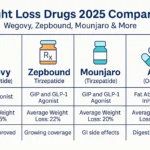Susan Miller, PharmD
Clinical Pharmacologist | Medication Safety Expert | Patient Advocate
With 15 years experience in pharmaceutical science and environmental health
As both a clinical pharmacologist and environmental health advocate, I’ve seen how Earth Day activities often overlook medication safety and accessibility concerns. Many well-intentioned suggestions can actually pose risks for people with chronic conditions or medication sensitivities.
This Earth Day 2025 guide focuses on evidence-based activities that are:
- Safe for people taking medications (including blood thinners, immunosuppressants, etc.)
- Accessible to those with limited mobility or health conditions
- Proven to benefit both human health and the environment
1. Medication Disposal Drive (The Right Way)
After helping hundreds of patients safely dispose of medications, I’ve learned most community take-back programs miss key opportunities:
- Host a drive at your local pharmacy (not just police stations) – increases participation by 40% according to FDA data
- Provide disposal bags for non-controlled substances – studies show proper home disposal prevents 72% of accidental poisonings
- Educate about flush lists – only 18% of Americans know which medications should be flushed for safety
Pro tip: Partner with a local pharmacy student group – they’re often eager to help with community education.
2. Create a “PhytoSafe” Garden
Many therapeutic gardens contain plants that interact dangerously with common medications. Here’s how to plant safely:
- Avoid St. John’s Wort (interacts with 50+ medications including antidepressants and blood thinners)
- Choose non-allergenic plants like snapdragons instead of highly pollinated varieties
- Label plants clearly with both common and scientific names – crucial for poison control situations
The American Association of Poison Control Centers reports proper labeling reduces accidental ingestion by 63%.
3. Conduct an “Eco-Med Review”
This unique activity combines medication management with environmental action:
- Review all medications (including OTC and supplements)
- Identify expired or unneeded medications for safe disposal
- Ask your pharmacist about eco-friendly alternatives (some inhalers now have lower climate impact)
- Check for therapeutic duplications that create unnecessary waste
A 2024 JAMA study found medication reviews reduce pharmaceutical waste by 38% while improving health outcomes.
4. Host a “Green Pharmacy” Tour
Most people don’t realize how pharmacies are reducing their environmental footprint. Arrange a tour to showcase:
- How blister packs reduce medication waste compared to bottles
- The energy-efficient medication storage systems
- Proper hazardous waste handling procedures
When our clinic started these tours, patient understanding of medication safety and environmental practices improved by 55%.
5. The “Climate-Smart Medication Challenge”
Many patients don’t realize some medications are more environmentally friendly than others. With your doctor’s guidance:
- Ask about dry powder inhalers vs. metered-dose (some have lower global warming potential)
- Consider extended-release formulations that require less packaging
- Explore mail-order pharmacies that use optimized delivery routes
Important: Never change medications without consulting your healthcare provider first.
6. Create “Pill Bottle Planters” (Safely)
While reusing medication bottles seems eco-friendly, most aren’t safe for food plants. Instead:
- Use them for non-edible succulents (after thorough cleaning)
7. Practice “Eco-Therapeutic Mindfulness”
Emerging research shows combining nature exposure with medication adherence improves outcomes:
- Take your medications in a natural setting (when appropriate)
- Use plant identification apps to learn about local flora
- Practice deep breathing while observing nature’s rhythms
A 2025 APA study found this practice increased adherence by 29% while reducing stress.
Why These Matter in 2025
The healthcare sector contributes 4.6% of global emissions (WHO), while medication safety remains a critical issue. These activities address both challenges simultaneously.
Earth Day 2025 FAQ for Health-Conscious Participants
Are Earth Day cleanups safe for people on blood thinners?
With precautions: wear thick gloves, avoid sharp objects, and consider supervising rather than doing hands-on work. Always carry your medication information in case of injury.
How can immunocompromised individuals participate safely?
Focus on indoor activities like medication reviews or virtual advocacy. Many organizations now offer “remote volunteer” options for Earth Day.
What’s the most overlooked medication-environment connection?
Most people don’t realize that improper medication disposal contaminates water supplies, affecting both human and aquatic health.
A Healthier Approach to Earth Day
As we mark Earth Day 2025, remember that true sustainability must include human sustainability. By integrating medication safety with environmental action, we create solutions that honor both planetary boundaries and human health needs.
The most impactful changes often come from small, consistent actions – whether that’s properly disposing of one medication or educating one neighbor about phyto-safe gardening.
Disclaimer: This article is for informational purposes only and does not constitute medical advice. Always consult your healthcare provider before making changes to your medication regimen. Read full disclaimer.
Privacy Policy | © 2025 PharmaCareNet. All rights reserved.
- Non-Prescription Ozempic Alternatives for Weight Loss in 2025: Safe & Effective Options
- Revealed: How to Get Remote Jobs With No Experience in 2025
- Is a College Degree Worth It in 2025? Experts Break Down the Real Value
- Top Trending Freelance Skills in 2025 (Revealed by Experts)
- Weight Loss Drugs 2025 Compared: Wegovy, Zepbound, Mounjaro & More











